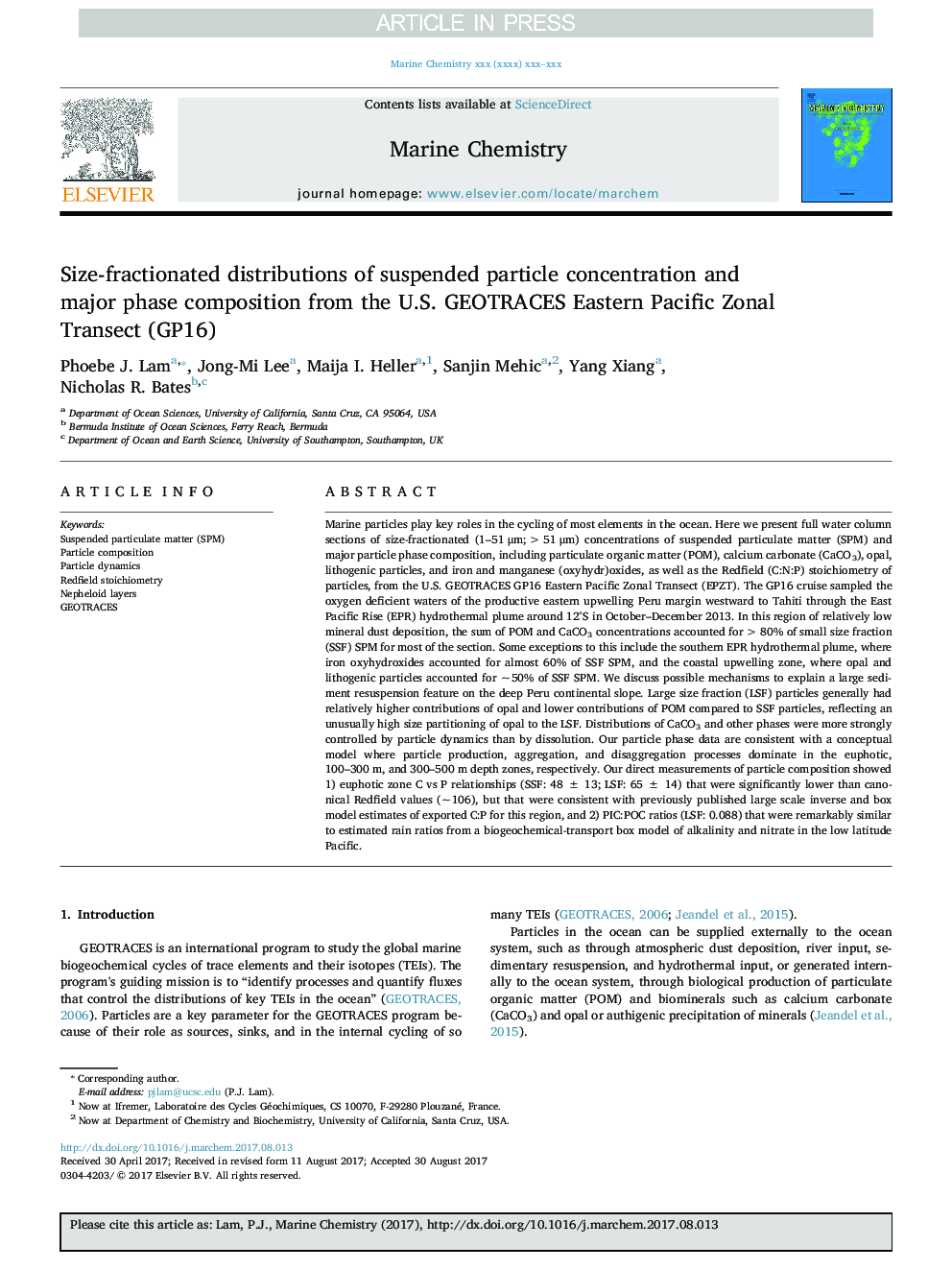| Article ID | Journal | Published Year | Pages | File Type |
|---|---|---|---|---|
| 7698843 | Marine Chemistry | 2018 | 18 Pages |
Abstract
Marine particles play key roles in the cycling of most elements in the ocean. Here we present full water column sections of size-fractionated (1-51 μm; > 51 μm) concentrations of suspended particulate matter (SPM) and major particle phase composition, including particulate organic matter (POM), calcium carbonate (CaCO3), opal, lithogenic particles, and iron and manganese (oxyhydr)oxides, as well as the Redfield (C:N:P) stoichiometry of particles, from the U.S. GEOTRACES GP16 Eastern Pacific Zonal Transect (EPZT). The GP16 cruise sampled the oxygen deficient waters of the productive eastern upwelling Peru margin westward to Tahiti through the East Pacific Rise (EPR) hydrothermal plume around 12°S in October-December 2013. In this region of relatively low mineral dust deposition, the sum of POM and CaCO3 concentrations accounted for > 80% of small size fraction (SSF) SPM for most of the section. Some exceptions to this include the southern EPR hydrothermal plume, where iron oxyhydroxides accounted for almost 60% of SSF SPM, and the coastal upwelling zone, where opal and lithogenic particles accounted for ~ 50% of SSF SPM. We discuss possible mechanisms to explain a large sediment resuspension feature on the deep Peru continental slope. Large size fraction (LSF) particles generally had relatively higher contributions of opal and lower contributions of POM compared to SSF particles, reflecting an unusually high size partitioning of opal to the LSF. Distributions of CaCO3 and other phases were more strongly controlled by particle dynamics than by dissolution. Our particle phase data are consistent with a conceptual model where particle production, aggregation, and disaggregation processes dominate in the euphotic, 100-300 m, and 300-500 m depth zones, respectively. Our direct measurements of particle composition showed 1) euphotic zone C vs P relationships (SSF: 48 ± 13; LSF: 65 ± 14) that were significantly lower than canonical Redfield values (~ 106), but that were consistent with previously published large scale inverse and box model estimates of exported C:P for this region, and 2) PIC:POC ratios (LSF: 0.088) that were remarkably similar to estimated rain ratios from a biogeochemical-transport box model of alkalinity and nitrate in the low latitude Pacific.
Keywords
Related Topics
Physical Sciences and Engineering
Chemistry
Chemistry (General)
Authors
Phoebe J. Lam, Jong-Mi Lee, Maija I. Heller, Sanjin Mehic, Yang Xiang, Nicholas R. Bates,
